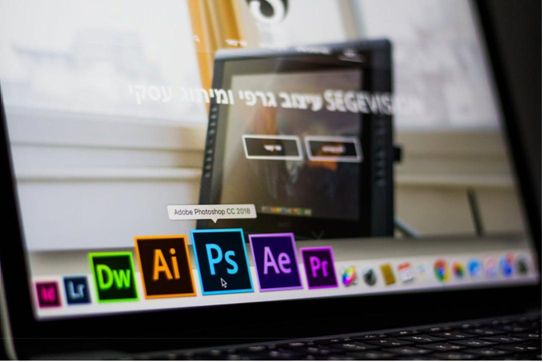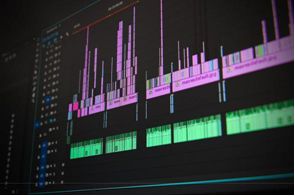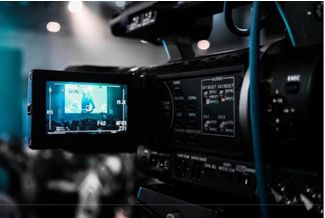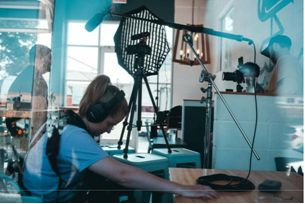
Video editing is an art form. A high-quality level editing software has never been more powerful or easily accessible than it is today. Giving everyone the chance to become a video editor, with no need for intense education training.
However, the lack of knowledge soon becomes evident when analysing a beginner’s content. It’s not the biggest issue, making mistakes. But, if it is an aspiration to make it big within the film industry, then everything created should be crisp, clean and entertaining, with a quality workstationto match. Video editing is all about immersing the viewer into the scene, and this is a hard feature to grasp.
In this article, we will be discussing the top 10 most common mistakes that any amateur video editor will make. So hopefully, anyone can avoid this when starting their own editing journey.
1 – Pacing
An important attribute any video editor should have, is understanding the ‘speed’ of the content and the required pace. The pacing of an edit can change depending on what is
happening in each scene. This is what makes this process so hard to understand, as scenes are ever-changing.
To put it simply, the more dramatic a scene in a video, the faster the pace. That of an action shot with lots of cuts will have a faster pace to keep a high level of intensity. This speed needs to remain until the scene changes to something either calmer or slower.
This feature takes a lot of practice. So, focussing on clearly changing scenes will help the editor practice determining the pace until they are ready for creating an entire video.
2 – Jump Cuts
A jump cut, in video editing, is where a portion of a scene gets cut out of the video, and the scene jumps slightly ahead in time, skipping what really happened.
A jump cut can be a switch to a new camera or removing a few mistakes from the video. The simplest route for an editor is to just cut the scene away, however, beginners can often get carried away and get trigger happy when adding jump cuts to their editing.
An obvious jump cut in a video makes the viewer experience less smooth, ruining its flow, while losing its potential to reenact real-life circumstances. The result is to get the audience immersed into the scene, and jump cuts will ruin this effect and should be avoided as much as possible.
If, however, jump cuts are required, make sure the cut takes place in time with a character movement, so it comes across as a camera change. For example, someone reaching for a shelf, moving rooms, or turning their head, jump Cuts in time with these kinds of movements will make it seem far more realistic.
3 – Audio syncing

The timing and syncing of audio is one of the biggest areas where most beginner video editors make mistakes, and it can really throw off the experience the viewer is having.
The whole process regards hearing the speech at the same time that the lips move. A scene where the audio is faster than the characters’ actions can become massively confusing, and ultimately make the audience stop watching.
Usually, a good quality software will alert the editor when things are out of sync and will inform them to change it, but, for an amateur however, this alert can be missed or ignored.
It should be noted for beginners using a new editing software, that it is important to remain alert and consistently watch back what is being edited, even if it is only seconds long. This way, any mistakes will be seen early and can be changed with efficiency.
4 – Low-Quality Transitions
A common occurrence, the presence of low quality transitions are most often caused in the beginning stages of video editing. Transitions are used in videos to help move from scene to scene, allowing the editor to move along the storyline and allow characters to progress and move with ease.
Transitions can make the video more visually interesting, rather than using a straight scene cut with can come across as blunt and harsh to watch. A transition is also a great way to add visual edits, that can make a scene more interesting.
However, poorly done transitions can adapt the attention of the viewer and draw too much attention to the scene change, which will ruin the immersive experience.
Ensure all transitions that take place make sense and work well with the scene at hand, in order to keep consistent with the flow a film should have.
5 – Cutting Too Little From The Video

Amateur video editors tend to struggle with knowing what to and what not to cut out of a scene. A common trait for those inexperienced with video editing and that is to want to leave as much as possible, as longer content is ‘good quality content’.
However, this is not the case.
It is imperative for an editor to understand what needs to be cut, from first watching the scenes. Knowing what works best and what will excel against other edited videos
will aid in this process. It is more likely that the shorter content will get watched by a greater amount of people. This is because it won’t be taking too much of their time, maintaining their attention, while preventing them from getting bored.
6 – Flash Frames
Flash frames occur when an editor mistakenly introduces a new, or a random frame into the editing. This can happen from cutting one scene to another with the replacement of a shot.
The slight changes that seem to be made in fact interferes with the free-flowing scenes, and will create a flash between the old shot and the new one that has been placed between the scene changes. To do this correctly, the alignment of each shot and scene needs to be entirely flawless, if not, these stutter like flashes will take place.
A random flash can be discerning for the viewer. They will focus on this slight glitch even if it happens just once. But after a long day of editing, this small aspect can be easily missed, and quickly noticed by the audience.
7 – Audio Mixing

Working with audio is usually something a professional editor will not deal with. For an amateur or beginner, however, this is a task that will attempt without the required experience.
It is often said that bad audio can ruin a scene and alter the performance of a movie. A scene could be perfectly crafted and involve the best level of editing, yet poorly edited audio will interfere with the entire video. The viewers will be quick to
focus on the terrible audio rather than on the perfect visuals.
It is important to remember that background music has the name for a reason. It should not come any closer to the front of the scene. Don’t let the music take charge or interfere with the dialogue or visuals happening on screen.
8 – Overuse Of Special Effects
The use of special effects is a dangerous part of video editing, and can quickly become out of hand. Only a few professionals will avoid using effects entirely as they know the problems that they cause. But, a beginner will likely love the freedom and creativity that these effects give.
There is a whole collection of effects that can be used, from scene flippers, lighting changes and title manipulations that seem like that look cool at first. But, by placing more than a couple within an entire video, can cause the power of the scenes to be ruined, affecting the viewer’s experience.
For a beginner, this is a section of editing that should be ignored, imperative. Otherwise, the entire video can be ruined.
9 – Unnecessary Commentary
A common mistake that can be made, is the use or overuse of commentary in a video. A beginner will want the video to be understood and may question whether the audience will understand their artwork. So in an attempt to prepare for this lack of understanding, commentary will often be added throughout the video.
It is recommended that you avoid spoon-feeding the viewer’s information with video commentary.
10 -Ghost Frames

This editing mistake occurs when a transition mishap takes place. Ghost frames take place when the right amount of time isn’t allocated to a shot that needs to leave the screen (dissolve). Therefore, when one shot is taking transition into another, but the first one has not been given enough time to break down, it cuts quickly. This causes the screen to become ‘ghosted’.
The simplest solution that could be recommended for this, is to ensure there is no shot that can enter between transition. Do not allocate one time or space, but check that each used shot has enough time to dissolve from the scene.
Summary
Being a successful, compelling video editor takes time, practice and a lot of knowledge. It is not a career or even a hobby that can be completed without the required training and experience required.
It is important to remember when editing, that the audience is what matters the most. These are the critics and share their opinion of your completed video if they feel passionately enough.
The most professional video editors know everything there is about software and technology, even down to the simplest of things like lighting choice and colour. So, allocate enough time to learn. It is not a case where learning can be done on the go, it mostly needs to be done seriously, before practice takes place. Especially to avoid these common mistakes from happening!
Sydney Tierney just recently finished her studies; is working her way into the world of content writing as a digital marketing assistant. She writes for clients that specialise in photography, digital marketing and video workstations.